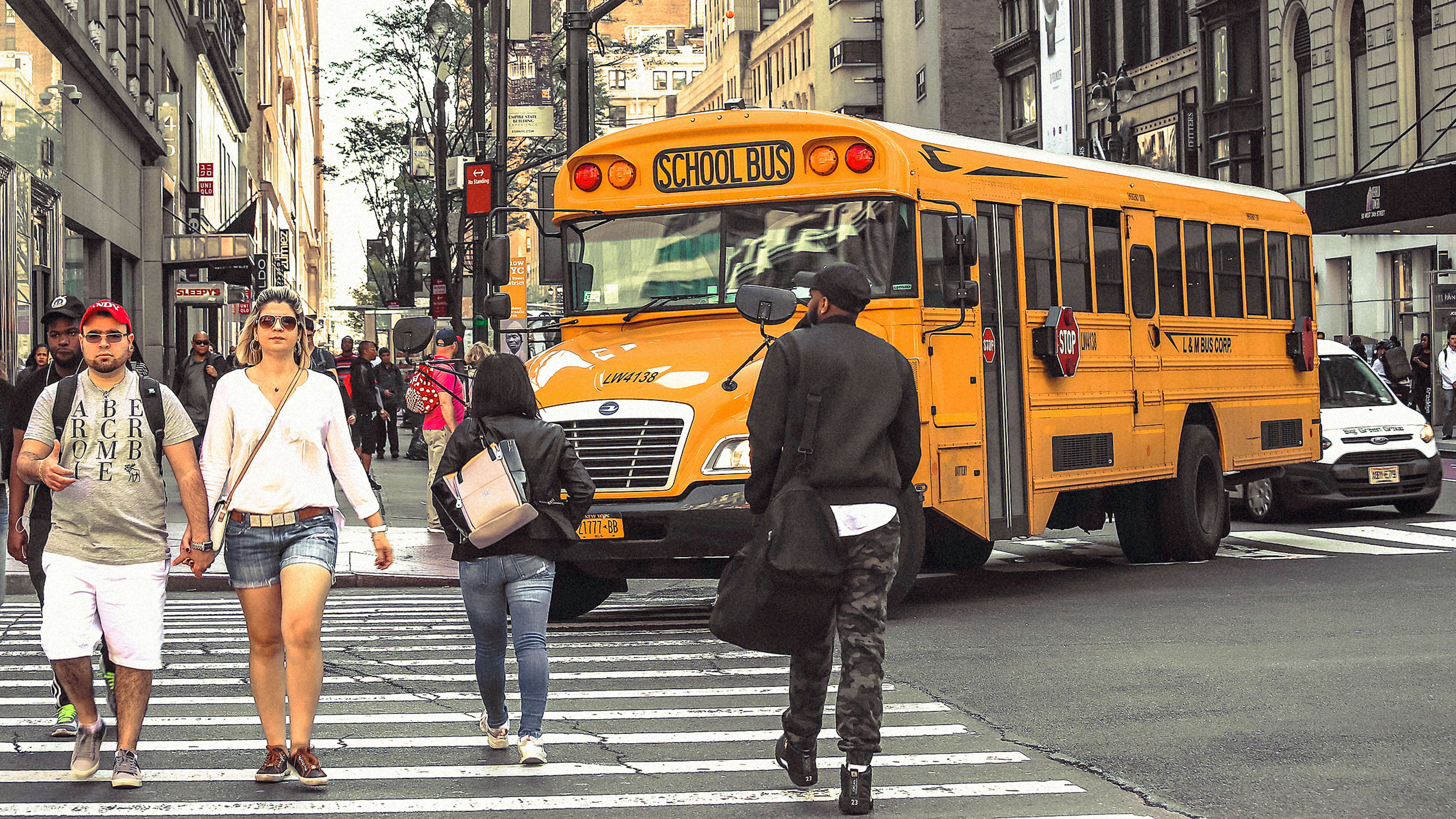The yellow school bus is an iconic feature of the American streetscape—their rumbling presence through neighborhoods signals the end of summer and the beginning of a new school year for kids. But as nostalgia-inducing as they are, yellow school buses are not exempt from the wave of disruption sweeping transit in the U.S.
The ride-hailing company Via is licensing its technology to the New York City Department of Education in an attempt to modernize the city’s entire school bus system. Through the Via partnership, school buses will be able to more quickly adapt routes to respond to kids’ needs, and the tech platform will provide GPS tracking and real-time updates to parents and students as they navigate school transit, says Via cofounder and CEO Daniel Ramot.
Instead of offering mainly personal rides like Uber and Lyft, Via is built on a pooling model that it says sits between private car trips and public transit. When a passenger requests a ride through the Via app, the algorithm matches it with other passengers in the area that are all traveling to the same general location (or at least in the same direction). It then designs the most efficient route for a single vehicle to pick them all up and deliver them.
In a sense, this is what school buses aim to do. School districts operate a number of buses that both pick up kids and bring them to school in the morning and then reverse course to bring them home in the afternoon. Determining the best routes for the buses, though, is a tricky—and constantly shifting—problem. For a school bus system to work, there needs to be an understanding of how many stops a bus should make, where those stops should be, and how many kids might board at a single stop. All the routes must be optimized to avoid redundancies, while also ensuring that every kid who needs a ride can get one. But as kids move in and out of school districts and as populations of people who rely on the yellow buses change each year, it’s difficult for districts to keep up with evolving demands.
This leads to struggles like those New York City has been grappling with. Last year, the public school system’s bus network, which serves 150,000 students, received at least 130,000 compliant calls in September alone. Concerns centered around bus punctuality and capacity and in some cases, instances when buses didn’t even show up. The NYC Department of Education manages around 9,000 bus routes. To determine those routes, Ramot says that the DOE currently relies on a database of student and school addresses that feeds into a decade-old software program, which a team uses to manually determine routes. This system makes it impossible for the school district to quickly adapt to changes, like when a student moves (a fairly common occurrence in New York City, where one in every 10 public school kids lives in temporary housing like a homeless shelter). There’s also no way for students and parents to track the location of buses in real time. In response, local lawmakers passed a suite of laws mandating that the bus system be modernized to become more responsive.
That’s where the partnership with Via comes in. The ride-sharing company, in addition to operating its own fleet, also leases out its tech platform to partners. The New York City school district will gain access to Via’s algorithm, which will help it optimize the city’s bus routes on a daily basis. The algorithm will help bus drivers be able to respond to conditions like road work, traffic, and rough weather, which can cause delays. And because information will flow through Via’s tech platform, parents and students will be able to track the location of their bus in real time, ask questions, and receive updates through an app.
Most significantly, Ramot says, Via’s algorithm will integrate directly with DOE’s student address database (and students can also log a change of address directly in the app or a web portal). This will enable to buses to adapt to meet needs “pretty much overnight,” Ramot says. “A lot can change day to day, and if you’re trying to do that manually, it’s a huge challenge.” Having student location data—as well as traffic and road closure information—flow through an automated platform should enable it to be more responsive, he adds. At the same time, Via will have to be sure to protect student’s addresses and location data, or the privacy concerns of giving this information over to a tech company may outweigh the potential scheduling benefits.
According to Via, the partnership with NYC DOE will be the first automated school bus routing and communication effort of its kind. But should it prove successful (Via is optimistic it will improve efficiency and potentially save the city some transportation costs), it likely could be adapted to other markets. New York City is the largest school district in the U.S., so by starting with the steepest challenge, Via aims set a clear proof of concept for this new application for ride-sharing technology.
Recognize your brand’s excellence by applying to this year’s Brands That Matter Awards before the early-rate deadline, May 3.
